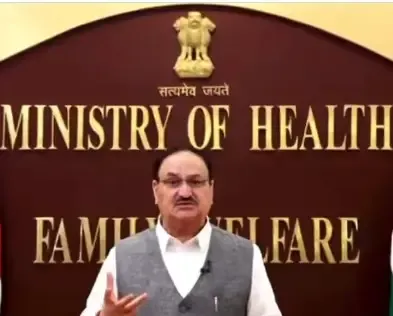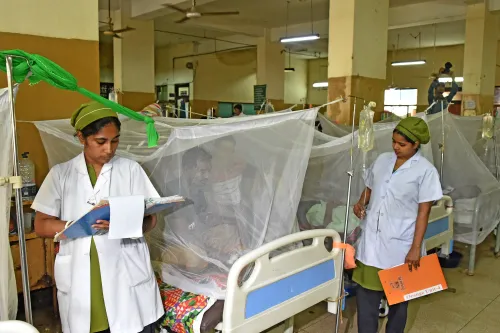How is WHO Addressing Excessive Bleeding After Childbirth?

Synopsis
Key Takeaways
- WHO has introduced guidelines to combat PPH.
- Focus on early detection and rapid intervention.
- New diagnostic criteria recommend action at 300 mL blood loss.
- MOTIVE bundle of actions is essential for management.
- Antenatal care is crucial for mitigating risks like anaemia.
New Delhi, Oct 6 (NationPress) The World Health Organization (WHO) has released groundbreaking guidelines aimed at preventing, diagnosing, and treating postpartum haemorrhage (PPH), a condition responsible for severe bleeding after childbirth, impacting millions of women worldwide.
The maternal health guidelines, co-published with the International Federation of Gynecology and Obstetrics (FIGO) and the International Confederation of Midwives, highlight the critical need for earlier detection and swift intervention to safeguard the lives of new mothers.
PPH stands as a leading cause of maternal mortality globally, accounting for nearly 45,000 deaths due to excessive bleeding following childbirth.
Even in non-fatal cases, it can have lifelong repercussions, ranging from significant organ damage to hysterectomies, anxiety, and trauma.
“Postpartum haemorrhage is the most dangerous childbirth complication since it can escalate with such alarming speed. While it is not always predictable, deaths are preventable with the right care,” stated Dr. Jeremy Farrar, Assistant Director-General for Health Promotion and Disease Prevention and Care.
“These guidelines aim to maximize impact in areas where the burden is highest and resources are limited—ensuring more women survive childbirth and can safely return home to their families,” Dr. Farrar added.
Launched at the 2025 FIGO World Congress in Cape Town, South Africa, the guidelines introduce new objective diagnostic criteria for identifying PPH.
Traditionally, PPH has been diagnosed as a blood loss of 500 mL or more, but the new guidelines recommend action when blood loss reaches 300 mL, or in cases of any abnormal vital signs.
To facilitate early diagnosis, doctors and midwives are encouraged to closely monitor women post-birth and use calibrated drapes—simple devices that accurately collect and quantify lost blood—allowing for immediate action when criteria are met.
The guidelines advocate for the prompt implementation of the MOTIVE bundle of actions following a diagnosis of PPH. This includes: Uterine massage; Oxytocic medications to stimulate contractions; Tranexamic acid (TXA) to reduce bleeding; Intravenous fluids; Vaginal and genital examinations; and escalation of care if bleeding persists.
In rare instances of continued bleeding, the guidelines suggest effective interventions like surgery or blood transfusions to safely stabilize a woman’s condition until further treatment is accessible, as noted by the WHO.
Furthermore, the guidelines stress the significance of quality antenatal and postnatal care to address critical risk factors, such as anaemia, which is particularly prevalent in low- and lower-middle-income nations.
Anaemia heightens the risk of PPH and exacerbates outcomes if it occurs. Recommendations for anaemic mothers encompass daily oral iron and folate during pregnancy and intravenous iron transfusions when rapid correction is necessary, especially post-PPH, or if oral therapy is ineffective.









